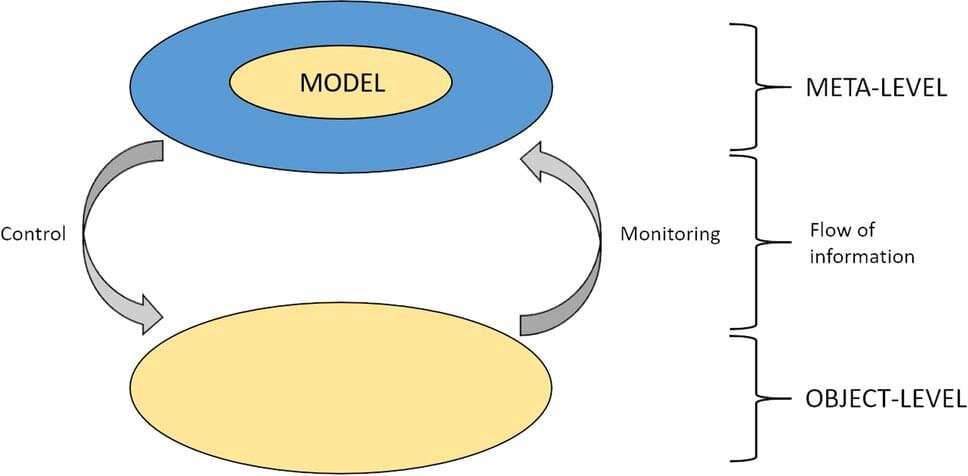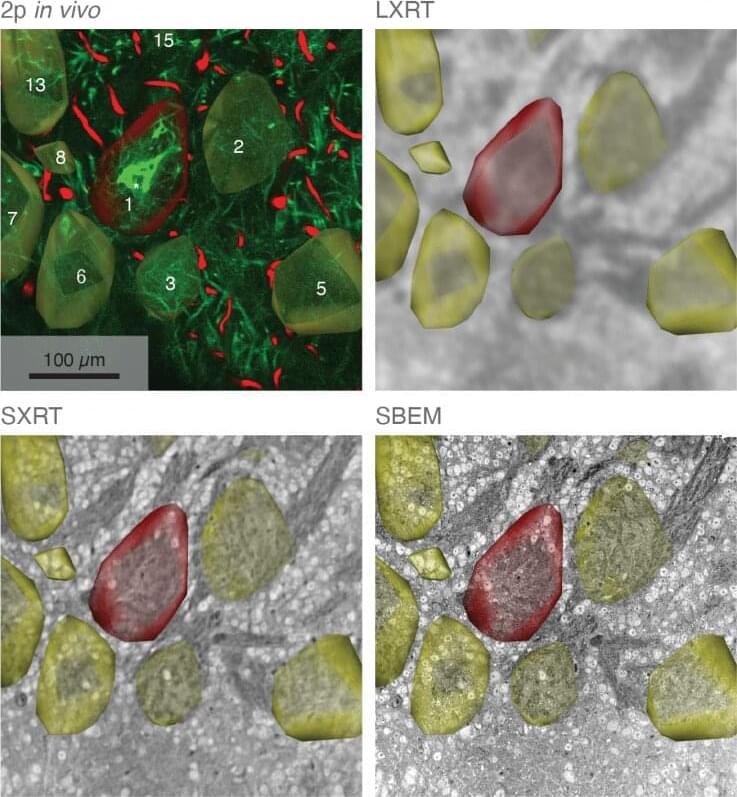“What the Brain says about Machine Intelligence” Jeff Hawkins Co-founder, Numenta 21 Nov 2014.
Category: robotics/AI – Page 1,581
How to help assembly-line robots shift gears and pick up almost anything
At the beginning of the COVID-19 pandemic, car manufacturing companies such as Ford quickly shifted their production focus from automobiles to masks and ventilators.
To make this switch possible, these companies relied on people working on an assembly line. It would have been too challenging for a robot to make this transition because robots are tied to their usual tasks.
Theoretically, a robot could pick up almost anything if its grippers could be swapped out for each task. To keep costs down, these grippers could be passive, meaning grippers pick up objects without changing shape, similar to how the tongs on a forklift work.

Creating artificial intelligence that acts more human
A research group from the Graduate School of Informatics, Nagoya University, has taken a big step towards creating a neural network with metamemory through a computer-based evolution experiment. Their paper appears in Scientific Reports.
In recent years, there has been rapid progress in designing artificial intelligence technology using neural networks that imitate brain circuits. One goal of this field of research is understanding the evolution of metamemory to use it to create artificial intelligence with a human-like mind.
Metamemory is the process by which we ask ourselves whether we remember what we had for dinner yesterday and then use that memory to decide whether to eat something different tonight. While this may seem like a simple question, answering it involves a complex process. Metamemory is important because it involves a person having knowledge of their own memory capabilities and adjusting their behavior accordingly.
The lab will work in areas such as quantum computing
The lab will work in areas such as quantum computing, explainable artificial intelligence (AI) that presents data in a manner that can be understood by humans, and Metaverse, a virtual world where people can connect through their digital avatars.
Tech Mahindra already has 10 Makers Lab across the world and the new unit at Mahindra University will be the 11th facility globally and second in Hyderabad, said the company.
“With the launch of Makers Lab, we will provide many talented and skilled individuals, with the opportunity to progress for a greater cause,” said CP Gurnani, MD & CEO, Tech Mahindra.

TechM, Mahindra University’s new lab to focus on metaverse, quantum computing research
IT major Tech Mahindra (TechM) and Mahindra University have signed a memorandum of understanding (MoU) to set up a new ‘Makers Lab’ for research and development. The lab will work in areas such as quantum computing, explainable artificial intelligence (AI) that presents data in a manner that can be understood by humans, and Metaverse, a virtual world where people can connect through their digital avatars.
Tech Mahindra already has 10 Makers Lab across the world and the new unit at Mahindra University will be the 11th facility globally and second in Hyderabad, said the company.
“With the launch of Makers Lab, we will provide many talented and skilled individuals, with the opportunity to progress for a greater cause,” said CP Gurnani, MD & CEO, Tech Mahindra.
What do we know about cortical columns? with Jeff Hawkins
What do we know about cortical columns? A neuroscience (and artificial intelligence) discussion with Jeff Hawkins of Numenta.
AlphaFold reveals the structure of the protein universe
To read about all our work on solving protein folding, go to deepmind.com/AlphaFold or read a timeline of the breakthrough here.
It’s been one year since we released and open sourced AlphaFold, our AI system to predict the 3D structure of a protein just from its 1D amino acid sequence, and created the AlphaFold Protein Structure Database (AlphaFold DB) to freely share this scientific knowledge with the world. Proteins are the building blocks of life, they underpin every biological process in every living thing. And, because a protein’s shape is closely linked with its function, knowing a protein’s structure unlocks a greater understanding of what it does and how it works. We hoped this groundbreaking resource would help accelerate scientific research and discovery globally, and that other teams could learn from and build on the advances we made with AlphaFold to create further breakthroughs. That hope has become a reality far quicker than we had dared to dream. Just twelve months later, AlphaFold has been accessed by more than half a million researchers and used to accelerate progress on important real-world problems ranging from plastic pollution to antibiotic resistance.
Today, I’m incredibly excited to share the next stage of this journey. In partnership with EMBL’s European Bioinformatics Institute (EMBL-EBI), we’re now releasing predicted structures for nearly all catalogued proteins known to science, which will expand the AlphaFold DB by over 200x — from nearly 1 million structures to over 200 million structures - with the potential to dramatically increase our understanding of biology.

Advancing dynamic brain imaging with AI
MRI, electroencephalography (EEG) and magnetoencephalography have long served as the tools to study brain activity, but new research from Carnegie Mellon University introduces a novel, AI-based dynamic brain imaging technology which could map out rapidly changing electrical activity in the brain with high speed, high resolution, and low cost. The advancement comes on the heels of more than thirty years of research that Bin He has undertaken, focused on ways to improve non-invasive dynamic brain imaging technology.
Brain electrical activity is distributed over the three-dimensional brain and rapidly changes over time. Many efforts have been made to image brain function and dysfunction, and each method bears pros and cons. For example, MRI has commonly been used to study brain activity, but is not fast enough to capture brain dynamics. EEG is a favorable alternative to MRI technology however, its less-than-optimal spatial resolution has been a major hindrance in its wide utility for imaging.
Electrophysiological source imaging has also been pursued, in which scalp EEG recordings are translated back to the brain using signal processing and machine learning to reconstruct dynamic pictures of brain activity over time. While EEG source imaging is generally cheaper and faster, specific training and expertise is needed for users to select and tune parameters for every recording. In new published work, He and his group introduce a first of its kind AI-based dynamic brain imaging methodology, that has the potential of imaging dynamics of neural circuits with precision and speed.

Scientists build subcellular map of entire brain networks
Researchers at the Francis Crick Institute have developed an imaging technique to capture information about the structure and function of brain tissue at subcellular level—a few billionths of a meter, while also capturing information about the surrounding environment.
The unique approach detailed in Nature Communications today (25 May), overcomes the challenges of imaging tissues at different scales, allowing scientists to see the surrounding cells and how they function, so they can build a complete picture of neural networks in the brain.
Various imaging methods are used to capture information about tissue, cells and subcellular structures. However, a single method can only capture information about either the structure or function of the tissue and looking in detail at a nanometer scale means scientists lose information about the wider surroundings. This means that to gain an overall understanding of the tissue, imaging techniques need to be combined.